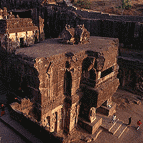BIRDING and WILDLIFE
Wake Up To Birdsong!
The Western Ghats are full of lakes and dams which attract migratory birds in the winter months, particularly wetland birds. Maharashtra�s countryside has its own unique bird fauna which is mostly gramivorous and insectivorous. Aurangabad�s bird checklist covers about 300 species.
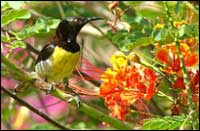
At The Meadows
11 acres of garden with a profusion of greenery, flowers and fruit trees makes The Meadows a natural mini sanctuary
for birds.
We have spotted around 50 species of birds in the garden without using binoculars including:
purple rumped sunbird, Loten�s sunbird, purple sunbird; yellow wagtail, pied wagtail; common babbler; small blue
kingfisher; common myna; rose ringed parakeet; barbet; coppersmith, large green barbet; magpie robin, Indian robin;
blue rock pigeon; tailor bird; grey hornbill; black droungos; crow pheasant; Baya weaver; red vented bulbul;
shrike; small green bee eater; warblers; nightingale; flycatcher; cuckoo; spotted owl; bhardwaj; parrot; house
sparrow.
In the winter months we have spotted various migratory birds at the hotel including Siberian cranes and herons.
Occasional guests are hare, langurs, rabbits and peacocks; even a wildcat or deer on occasion.
Binoculars are available at the Activities Desk.
Bird Watching Around Aurangabad
Lonar Crater
Situated on the outskirts of Lonar town in Buldhana District, the crater is distinguished by the fact that it is the world�s third largest crater. It has its genesis nearly 50,000 years ago, when a 2 million ton meteorite impacted the earth to create a depression 1.83 kilometers in diameter and 150 meters deep. Since that cataclysmic event, Lonar has evolved into an idyllic expanse of sky blue water amidst a sprawling emerald forest. Mineral deposits (probably from the meteorite) make the lake water very salty while freshwater springs abound at the crater�s edge. A unique ecosystem has evolved in the crater.
Today, it attracts tourists as well as members of the scientific community from across the world. This destination has much to offer wildlife enthusiasts as it is generously endowed in both flora and fauna. The crater is home to hundreds of peafowl, chinkara and gazelles, which browse amongst the shrubs and bushes ringing the lake. Other residents include egrets, moor hens, herons, coots, white-necked storks, lapwings, grey wagtails, grebes, black droungos, green bee-eaters, tailorbirds, magpies and robins as well as numerous species of migratory birds like flamingos that often visit the place. Lonar impresses with the richness of its natural heritage. And, like the meteorite that put it on the map, leaves a lasting impression.
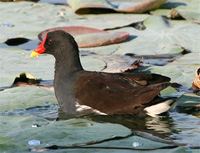
Jayakwadi
This sanctuary around Jayakwadi dam is spread over 34,105 hectares and is a haven for nature lovers. A variety of resident and migratory birds can be sighted and it is especially popular for spotting wetland birds. The dam is also an important staging and wintering site for migratory waterfowl (including birds from Siberia) and there are excellent observation points across the sanctuary. The best season for bird - watching is between October and March.
Gautala
Located about 65 km from Aurangabad among the hill ranges of the Sahyadris, the bowl shaped Autramghat Wildlife Sanctuary on hilly terrain has diversified vegetation that supports rich fauna and floral diversity.
Particularly, it is good as a sloth bear and barking deer habitat along with fox, neelgai, wolves, leopards and rabbits. Over 230 resident and migratory birds can be spotted here including cranes, ibis, spoonbills, storks, quails, partridge and jungle fowl.
The sanctuary also contains some scenic waterfalls, the ancient and possibly oldest Buddhist Pithalkora Caves and the 15th century Maratha fort of Antur.
We offer naturalist guided tours for birding and sanctuary visits. Excursions include transportation, guide, picnic lunches and first aid boxes in event of emergencies.
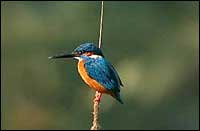
Jawaharlal Nehru Bustard Sanctuary
Starting near Ahmednagar, this is one of the last remaining habitats of the Great Indian Bustard of which approximately only 500 remain in the entire country. The sanctuary is spread across approximately 8000 square kilometers of grasslands and woodland. Species spotted are mostly grassland birds and include: Great Indian Bustard, Indian Bushlark, Ashy-crowned Sparrow-lark; Roufous-tailed Lark, Southern Grey Shrike, Yellow-wattled Lapwing; Red-necked Falcon, White-eyed Buzzard, Rock Bush Quail, Barred Buttonquail, Grey Flancolin, Eurasian Collared Dove, Pied Buschat, Common Myna, Large Grey Babbler, and Indian Silverbill.
Morachi Chincholi
In Marathi, it translates to mean a village of tamarind tress and dancing peacocks. The Peacock Sanctuary of Morachi Chincholi near Shirur is about 170km from The Meadows. A green haven, the best time to spot an abundance of its 2000 �dancing peacocks� is June to December as they are partial to the monsoon and occasional light winter showers.

The nearby village of Ranjan Khalge or world famous potholes is a geological curiosity. Kettle-holes are formed in the rocky river banks by small whirlpools eroding a hole in the rock. The abrasion is mostly caused by the movement of small sediment such as river stones. The insides of the holes are smooth and regular and a quaint sight.
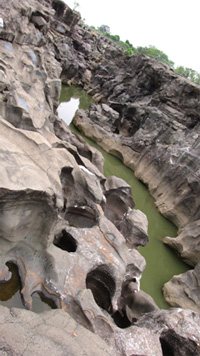
Reservations and inquiries are welcome at Tel. 91-22-66548361/62, 22073014/15, Mobile: 09764441833 Fax. 91-22-22033622
 9764441833
9764441833
Email: sales@themeadowsresort.com , reservations@themeadowsresort.com
Connect with us : ![]()
![]()
Payments options : ![]()
![]()
![]()
![]()
![]()
Website Designed & Website Maintenance by MiracleworX Website Designer In Mumbai
